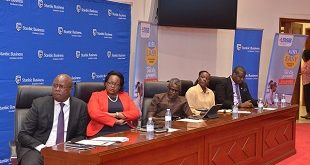
Government, oil companies finally appear to be chasing some useful deadlines
Uganda’s oil sector might look dull and inactive to the uninformed eye but in reality it is now a bee-hive of activities with tight deadlines to be met. At least six major oil-related engineering projects are rolling concurrently at fast pace and major project milestones are now set for March, August, and December with numerous small deadlines thrown in.
In fact, the work is so tight that questions are now being asked about whether the government, after lying in slumber for many years, has not become too idealistic in its pursuit of first oil.
That is the fear that the Minister of Energy and Mineral Development, Irene Muloni, sought to put an end to during a recent signing of yet another major milestone; the start of the basic designing stage for the Central Processing Facilities (CPF) in two oilfields, mainly in western Uganda, technically called the Front-End Engineering Design [FEED] .
During the FEED launch on Feb. 14 in Kampala, Muloni said both the government and the oil companies are in “fast-track mode” to deliver oil to Ugandans in 2020.
“All parties to the project— the government and the Lake Albert upstream partners— are fully committed and focused to meet the target of first oil by the end of 2020 and are working very closely together to achieve it,” she said.
The FEED study will determine the scope, cost, and scheduled estimates that the oil companies will base on to make their Final Investment Decision (FID) sometime in December – another major deadline.
Normally, the FEED should lead to another major design stage called the Engineering, Procurement, and Construction (EPC) of the project. This time, however, the government and oil companies are combining the FEED and EPC into a single project to speed up things.
The FEED and EPC usually take two to three years to complete and the FID one year after that but it looks like the government and its partners are determined to squeeze all those activies into just one year.
 The Independent Uganda: You get the Truth we Pay the Price
The Independent Uganda: You get the Truth we Pay the Price


